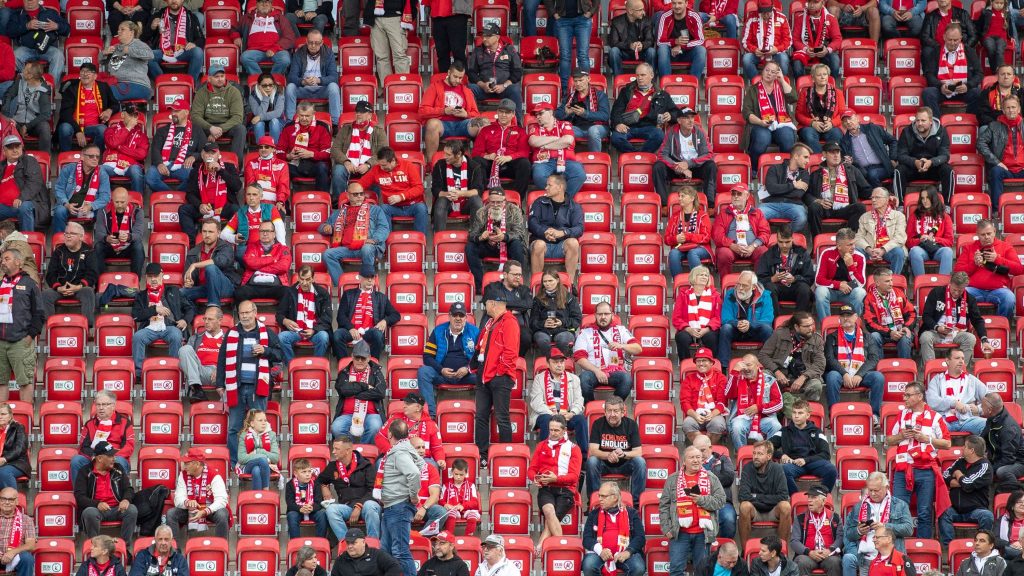A Third Of Football Fans Happy To Return To Attending Live Matches In A Stadium, Says Study
December 7, 2020
With UK clubs now opening doors to fans (clubs in tier one of the new restrictions can have up to 4,000 fans attend matches, with up to 2,000 allowed at games in tier-two areas) , Nielsen Sports Fans Insights has shown that whilst attitudes and behaviours of football fans have changed due the COVID-19 outbreak, in a boost to the hospitality and events industry, 1 in 5 expressed an interest in watching as part of a public viewing in a pub/bar or on outdoor big screens.
Elsewhere the data also revealed that for football fans to feel comfortable inside stadiums and consuming live sport again, there are several key services seen as essential. 72% of fans are expecting updated cleaning polices, 70% want to see increased hand sanitizer stations and 69% would still feel more comfortable with social distancing measures and limited crowds in operation for the foreseeable future.
There is a growing recognition in the UK of the role club partners have to play in rebuilding the live experience for fans, both in stadiums and at home. 61% of people believed that the role of club partners is very important in helping live sport return to some form of normality.
A similar consensus has also grown around the interest people have in brands that have behaved in a socially responsible way during the pandemic. Younger fans have been the drivers in this new way of viewing sponsors and brands, with 48% of 16-29-year olds in the UK showing an increased interest in brands that have appeared socially responsible during pandemic.
Spencer Nolan, Nielsen Sports’ Managing Director, UK & Ireland, commented: “Fans returning to stadiums this weekend is a welcome boost to the industry and a clear indication that we are finally moving in the right direction. In truth though, half of the Premier League clubs will have no fans in the grounds and others will have just 2,000 so there will be very little impact on broadcasters during this early phase of fans returning to stadiums. If anything, it could actually reduce impact and distract viewers at home.
“Our Nielsen Sports Fan Insights data shows that it will take time for fans to feel comfortable again about returning to stadiums to watch live events, It’s clear that attitudes and behaviours amongst football fans have changed and, in a post-COVID world, fans will continue to adopt new ways of experiencing live sport.”
Nolan continued: “There will continue to be a strong emphasis on ensuring the remote fan is engaged with the club and its partners through social media platforms and short form content. As the data suggests, especially amongst the younger demographic, social causes are extremely important to the consumer when they consider engaging with a brand. The interaction therefore with both fans returning to stadiums and remote fans at homes must be authentic otherwise this can easily turn the fan off from the experience.”
Dhaval Ponda, Global Head, Media and Entertainment Services, Tata Communications said : “Fans and broadcasters alike will be breathing a sigh of relief as live sport venues gradually open their doors in various parts of the UK following the end of the second lockdown. The media and entertainment sector has suffered greatly due to the pandemic and organisations have had to reimagine how they bring live sports and entertainment to the comfort of people’s homes. And while this still has its own set of challenges, the question now is how broadcasters can bridge the gap between those watching in the stands and those watching at home.
“Matches and tournaments require multiple cameras, cutaways, reactions and commentary that need to be captured and edited in real time. Live events have become more resource intensive than ever before and need to be properly equipped with the right digital broadcast infrastructure and connectivity capabilities to deliver high quality experiences. Thankfully, with the right technology and infrastructure in place they can make a considerable stride to delivering live-equivalent experiences at home. As broadcasters embark on this new hybrid model for live sports, we can expect the majority of broadcasters to look at adopting remote production capabilities and continue investment in their digital transformation journey. For this new way of working to be future proof, technology will play a huge role in building resilience into the sector.”


